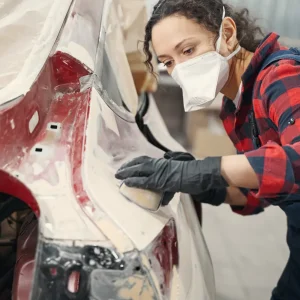There has been no shortage of smartphone apps pouring their way onto the market inside the past five years.
Some of them are more than worth a fleet operator’s attention – and lot of them aren’t – but with so many appearing at such an escalated rate, it’s worth assessing what apps actually bring to the table for the business car community.
Are they really worth the download (okay, a lot of them are free) or are they just a gimmick to drum up a bit of interest around the company that has put its name to the technology? And equally, is it a wise move to give your company’s drivers yet another potential distraction on their phone?
Hitachi Capital is one of the leasing companies to champion the app. The firm won the Best App category in this year’s BusinessCar Techie Awards with its Mobile Solution, which has a plethora of core fleet features such as the ability to prompt drivers to report any damage before their vehicle reaches the end of its contract, and advises as to whether a smart repair would be worthwhile.
 National sales manager David Jackson explains why the firm invested in it: “People are very quick to embrace technology, but in their rush to get to the market they miss the real issues. The way people are doing stuff now is on the move, so we’ve tried to tackle the real issues.
National sales manager David Jackson explains why the firm invested in it: “People are very quick to embrace technology, but in their rush to get to the market they miss the real issues. The way people are doing stuff now is on the move, so we’ve tried to tackle the real issues.
“When a car is renewed, the big thing in the industry is end-of-contract damage costs, and everyone thinks they’re going to get done. The app walks them through that and gets them to take pictures on their phone. That goes through to our remarketing team and they appraise the vehicle, and they then suggest whether it’s worth getting a smart repair or just returning the car. It’s a tangible benefit.”
Hitachi’s app also has a grey fleet tool, which takes the responsibility off the fleet operator’s back and places it on the driver to update the details of their vehicle.
Jackson continues: “A spreadsheet is only as good as someone updating it. If you’ve got a list of 200 people with cars and someone changes their insurance details then it’s a manual job to get that driver’s updated details. The grey fleet element takes the onus off the employer and onto the driver.”
Hitachi’s app does have concrete benefits for fleet operators because it’s targeted specifically at the business car arena.
Ghost in the machine
Not every leasing company believes that the app is the way forward, though.
Rather than developing individual systems for different platforms, Lex Autolease effectively decided to leapfrog the app and just make the new website compatible with every platform – iPhone, Android, Blackberry etc. – a move it believes will be significantly more practical than developing a suite of apps.
Christian Hook, e-commerce manager at Lex, explains why: “We were the first to market with the Mobile LAi [Lex’s existing app] and having seen how the market has progressed, there are quite a lot of similar apps around.
“There are bits of functionality offered by different ones that are good, like the mileage tracking on Vauxhall’s Roadtrip app, but no one app offers everything company car drivers need.
“People have been quick to jump on the bandwagon. In some instances, there has been the option to book a service [as part of an app] but that just takes you through to a page with a phone number to ring – that’s not good functionality.”
He continues: “It’s hard to always use apps. I understand that there’s some kudos to having an app and it looks good in your marketing material, but if you can have swipe functions on your website then you’re offering the same experience to all users.
“We’re also making use of the capability of the device [smartphone or tablet], such as the ability to upload accident photos and use GPS coordinates.”
Car manufacturers have been keen to jump on the bandwagon, and virtually every one has an app of some description. Ones with real worth to fleets are few and far between, but Toyota’s MyCompanyCar and Complete Company Car Tax Guide are aimed squarely at business car operators.
Fleet marketing manager Jon Hunt explains why the company chose to develop them: “Two years ago, I produced a tax guide, which was a printed booklet. It was really popular but it lacked the ability to be updated quickly and it wasn’t able to clearly show a proper comparison.
“I developed the first one (tax calculator) as a guide to tax and company cars – that in itself was a little bit crude, so over the last year, I decided to make it a proper Apple app.
“It has another usage in that you can quickly bring up the information you need and say, ‘here’s another vehicle you might like to consider that might save you, say, £1500’. It’s handy from a customer-facing and a dealer point of view. It’s also a way of connecting people because they can respond via the app.”
Hunt says the apps have been reasonably well received by fleets and that they are being used as they were intended to be – not just sitting dormant on people’s phones.
“The tax guide had been reasonably well used. It had had 8500 downloads or so. We could tell from the number of downloads when they were updated. We had one full tax year of it and most people updated them [when the financial year changed or the Budget was announced]. It’s less when advisory fuel rates change, but it’s still a significant portion.”
Cruise control
There’s a safety aspect to consider too. Some apps – satnav systems and green driving ones in particular – operate in the car, on the move when the phone is mounted in a cradle, which, is a cause for concern, according to managing director of Fleet Risk Consultants Nigel Grainger,
 “There are good ones and bad ones,” he says. “The big worry is about what stuff is being used for. I’ve seen examples on Facebook where people take pictures while driving.
“There are good ones and bad ones,” he says. “The big worry is about what stuff is being used for. I’ve seen examples on Facebook where people take pictures while driving.
“We’re getting into winter now and people love to take pictures of their temperature gauge – you can see that they’ve done it while they’re driving and it’s just ludicrous. Fleet operators need to be aware of this and take the appropriate steps. There’s no obvious way to keep on top of it.”
He says a no-nonsense strategy is the way to deal with this sort of behaviour: “You need to have a robust policy in place and police it. If you catch somebody, penalise them. You have to see it through.”
But Grainger acknowledges that there are useful apps around: “Ones for lone workers are good – you can actually find the employee. That’s important from a health and safety perspective because you know where people are. If you’ve got a salesman who’s out and about all day, he’s done a day’s work – how do you know he’s got home safe? How do you know your fire alarm engineer’s not stuck up a duct somewhere?”
Switching on
The consensus is that the use of tablets and mobile technology in this sector is here to stay, so fleet operators should not ignore apps for that reason, and more to the point, it’s worth being switched on about how the rest of the industry is working.
As Grainger says, it’s a case of picking and choosing what works for you and your business, rather than just towing the technological line and downloading en masse for the sake of it.
“Part of it is working out whether these apps are suitable for your business. There are some useful ones around, but it’s a case of finding the ones you need and working out whether they fit in a fleet context,” he says.
Hunt believes apps are useful tools, but a real-time service is always going to be of greater use to fleets.
“You can’t expect consistency. [If you’re relying on an app] then someone might forget to turn it on or something – arguably it could be better than a spreadsheet, though,” he says.
“It’s inconsistent, but they’re handy tools. They’re nice-to-haves and they’ll be used a little, but probably with most it’ll be a very low number. One thing is probably not going to suit everybody.”





